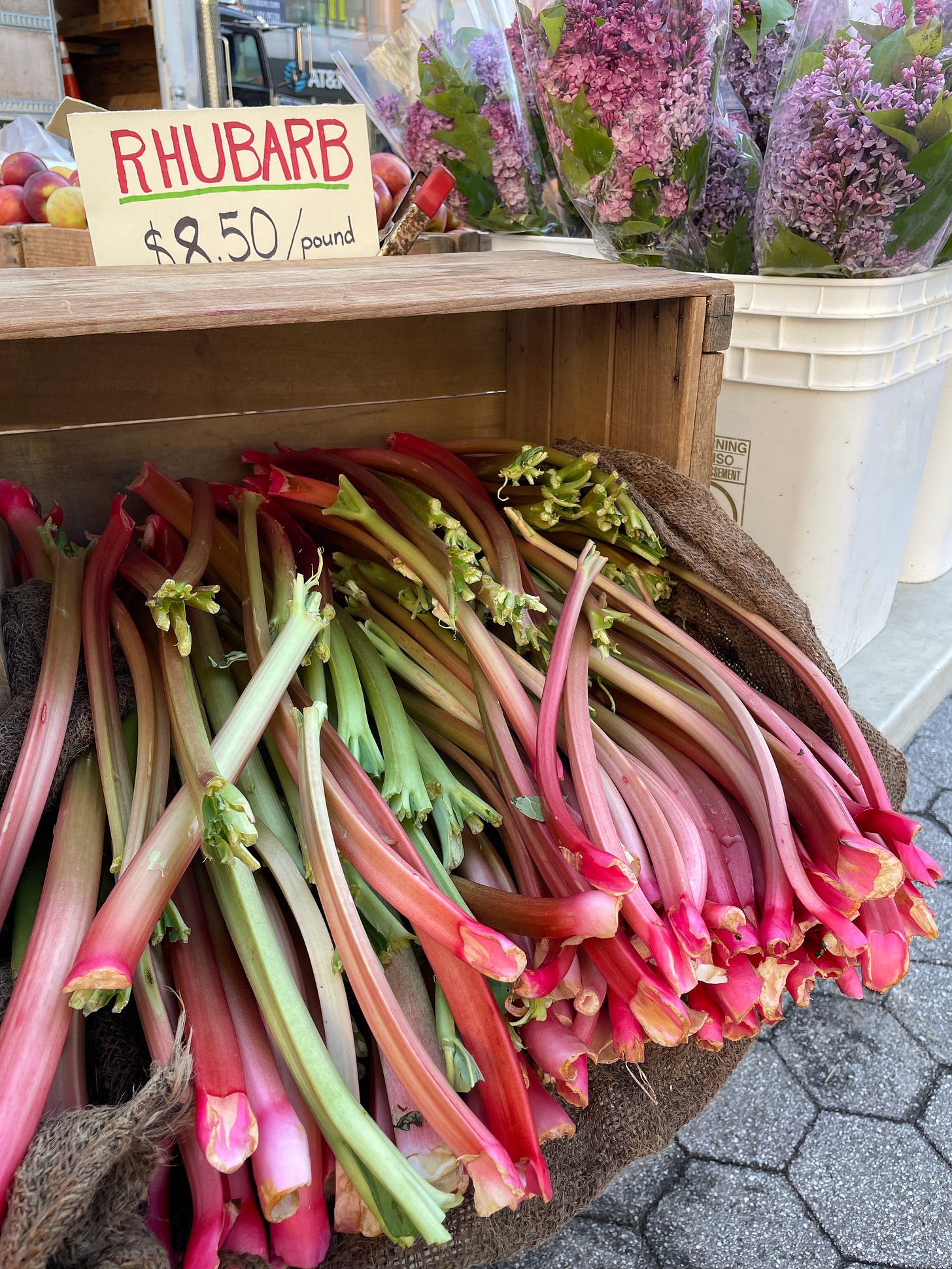April has been an odd month in New York. We’ve swung from below freezing to 80-degree days, and spring produce is definitely running behind schedule (kind of like this newsletter about April produce—oops!). With spring showing up late, the timing for this post actually works out quite nicely.
There’s a lot to love about spring—flowers blooming, more sunshine, and the return of patio season, to name a few. But beyond the more obvious joys, it’s the quieter, less celebrated signs that I find myself waiting for each April. Sweet overwintered greens. Bright alliums. Crisp, peppery radishes. The first stalks of rhubarb. Subtle, yes—but to me, they’re the clearest signs that winter is behind us.
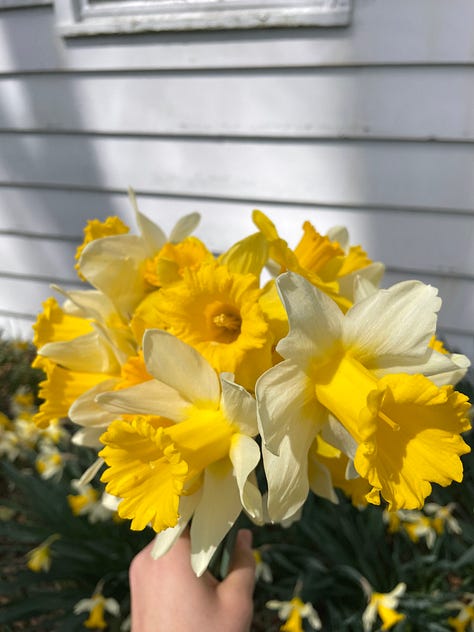
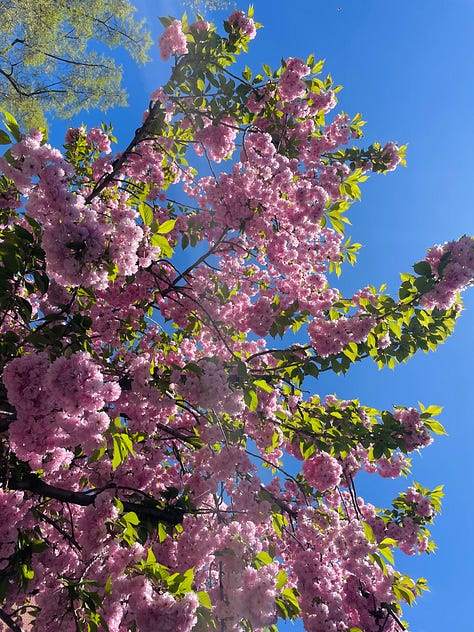

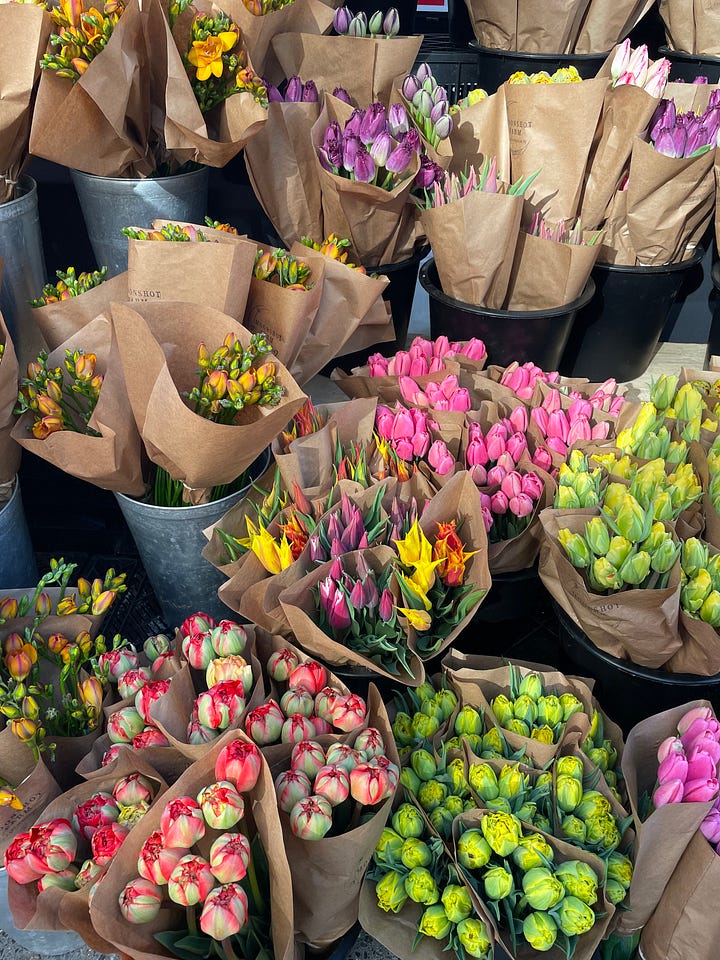

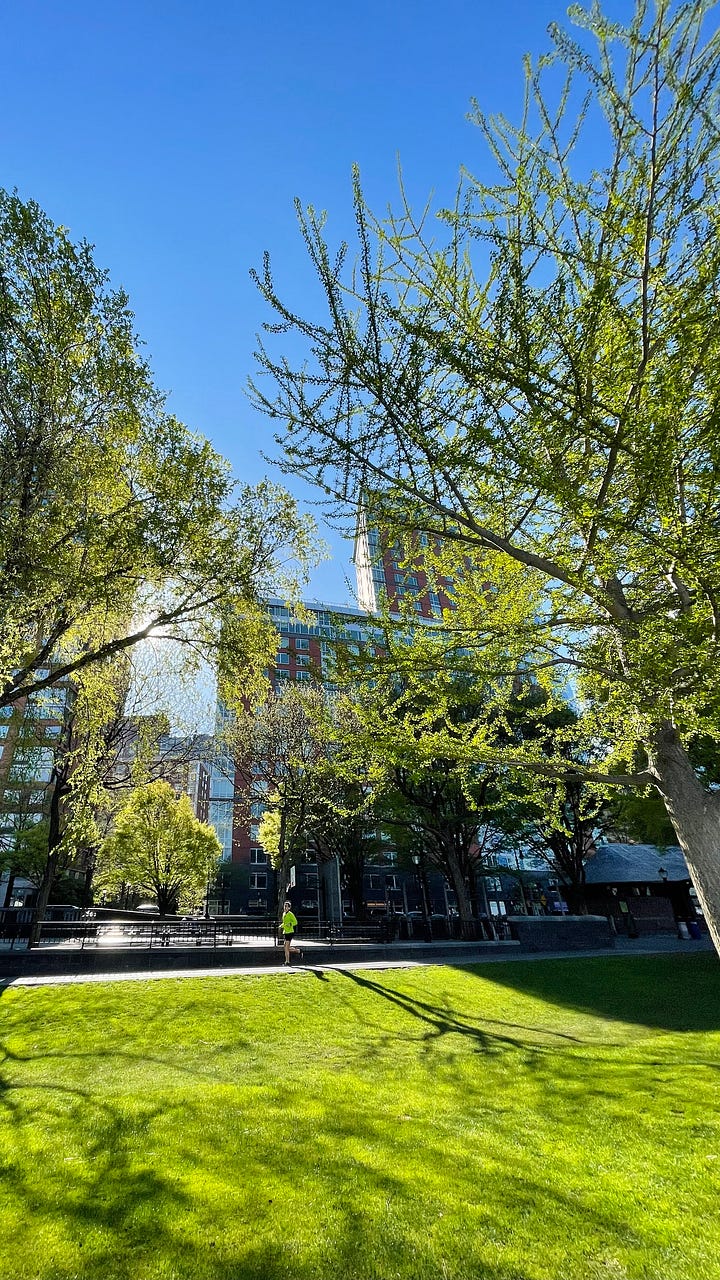
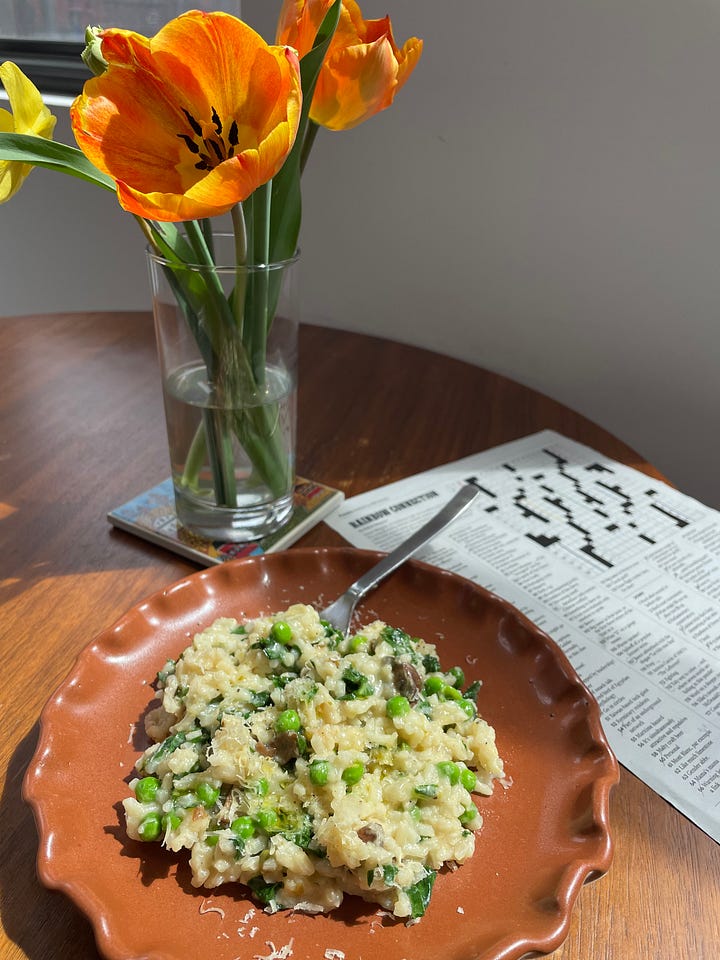
Overwintered greens!
These are the hardy leafy greens—like kale, broccoli rabe, and collards—that toughed it out through the winter. They go dormant during the coldest months, then come back to life as the ground begins to warm and the days grow longer. And here’s the best part: exposure to frost actually makes them sweeter. The cold triggers a natural antifreeze response, where the plant converts its stored starches into sugar to protect itself (I wrote more about this in my sweet potato newsletter!).
The result is greens that are sweeter with a more concentrated, richer flavor. A small reward for making it through winter right alongside them.
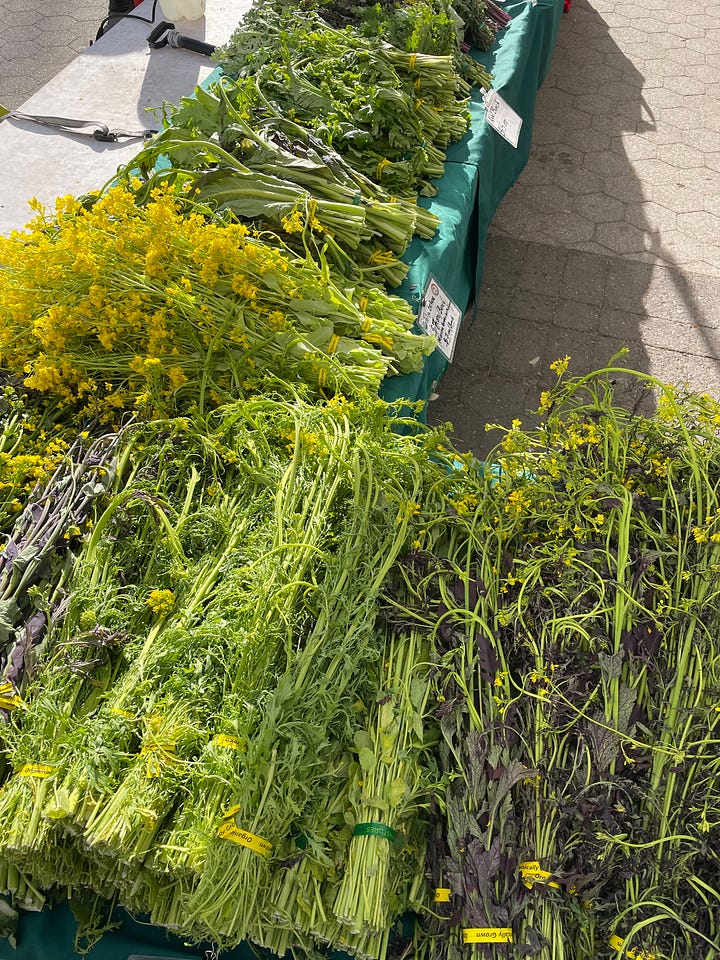
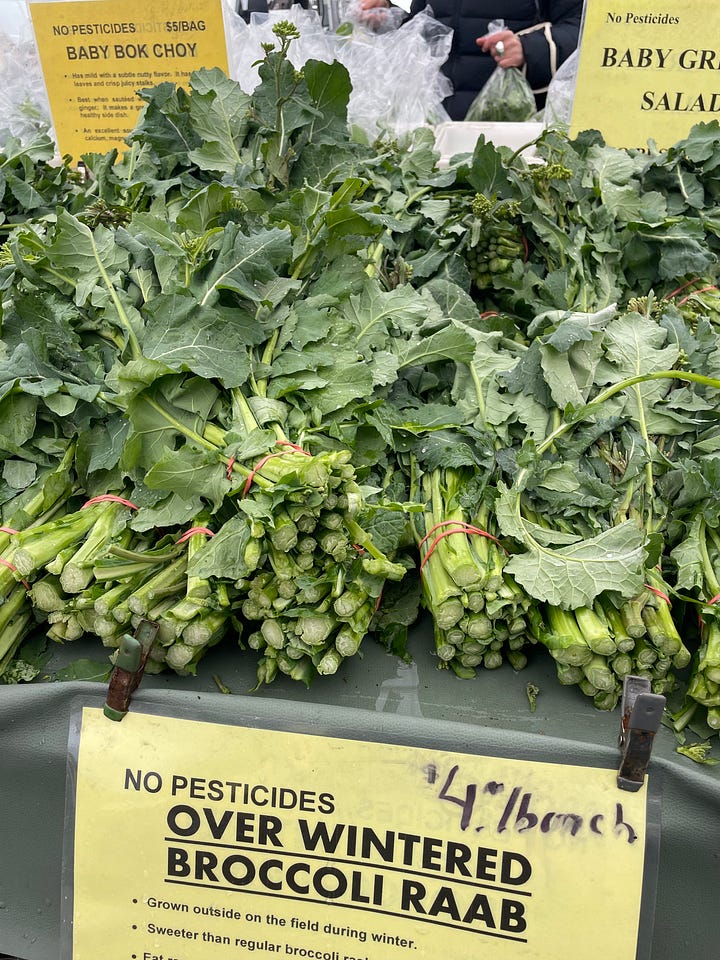
Let’s talk alliums.
Alliums are part of a big botanical group that includes things like onions, garlic, leeks, scallions, shallots, and chives. Basically, if it makes your eyes water when you chop it or smells amazing when it hits a hot pan, it’s probably an allium.
Spring is when the tender, young versions of these alliums appear. Think scallions, green garlic, spring onions, chives, ramps (if you’re lucky!), and baby leeks. They’re milder and brighter than their mature counterparts, with a freshness that makes everything taste more alive.
Spring alliums are the perfect addition to just about anything—toss them into salads, fold them into scrambled eggs, or char them on the grill. They’re the quiet backbone of spring cooking, bringing both depth and brightness to every dish.
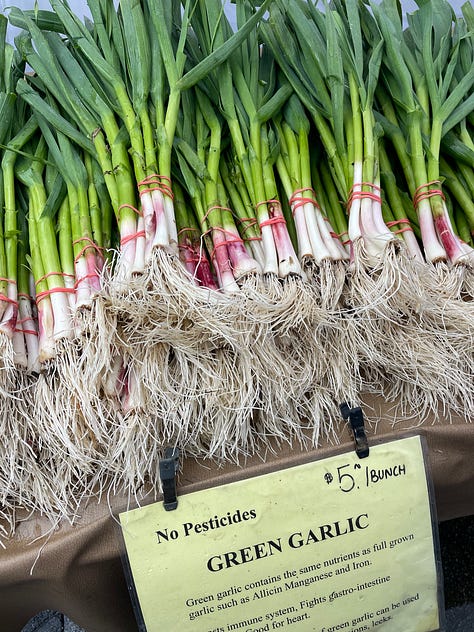
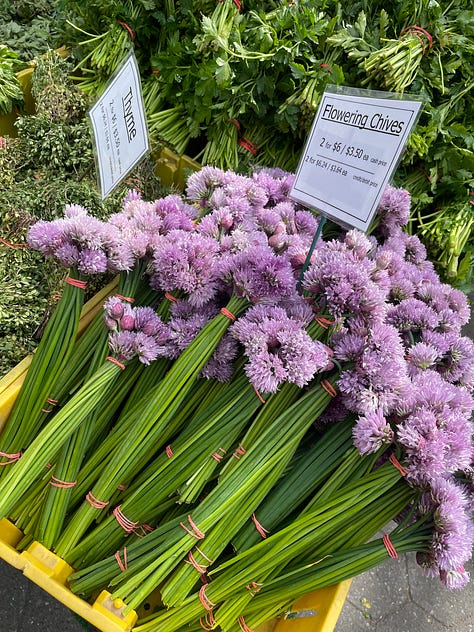
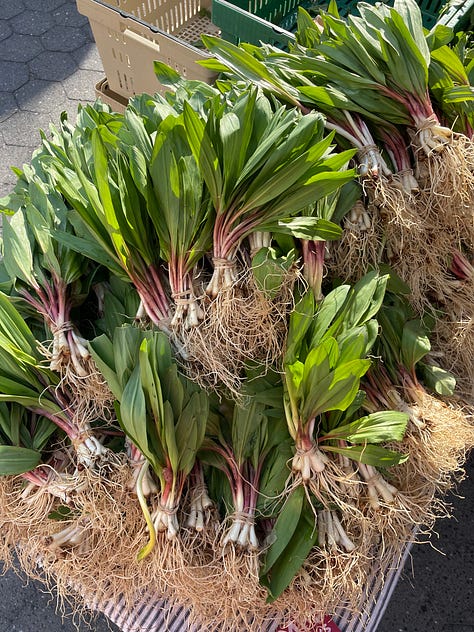
Then there are radishes.
Radishes feel like spring’s way of waking up your palate. They’re crisp, peppery, and can be a little spicy. You can find them in all shapes, sizes and colors—classic red rounds, French breakfast radishes, watermelon radishes, etc.
Eat them raw with good butter and flaky salt (a classic for a reason), thinly slice for salads, pickle them, or roast until they mellow and caramelize. Seriously underrated and versatile.
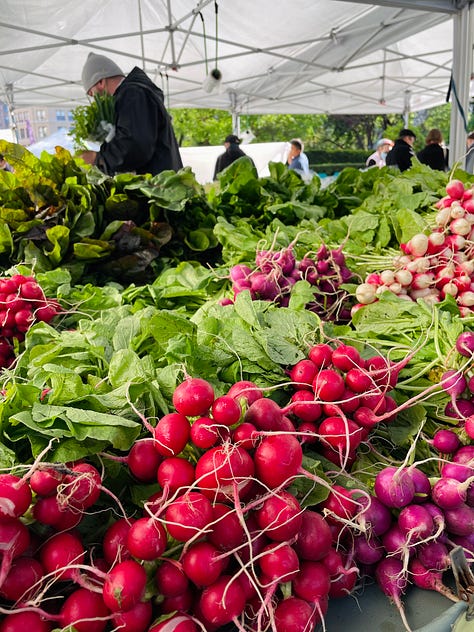
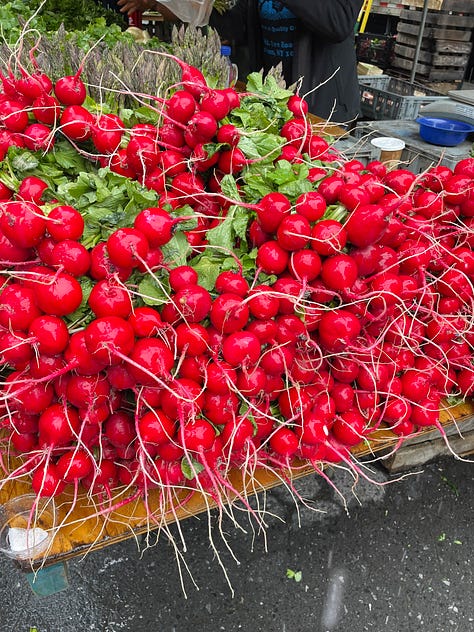
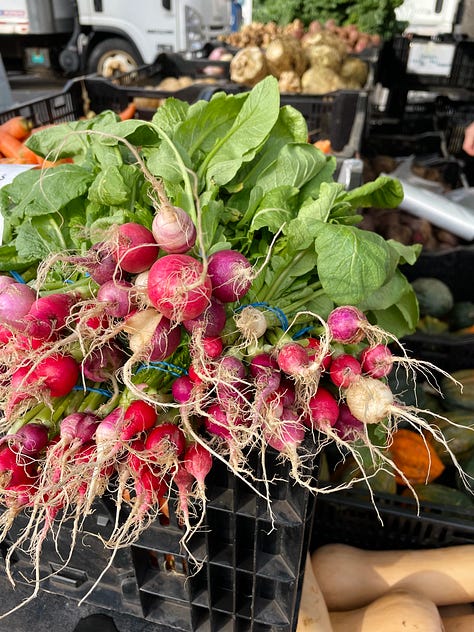
And of course, rhubarb.
With its bright pink stalks and bold, tangy bite, rhubarb brings a welcome liveliness to spring cooking. Technically a vegetable, but usually treated like a fruit, it’s tart, vibrant, and adds such a unique brightness to sweet and savory dishes.
It’s a pie classic (and for good reason), but rhubarb has range—it’s also amazing for compotes, salsas, chutneys, and syrups. One of my favorite ways to use it is cooked down with a bit of honey and spooned over yogurt. It pairs well with strawberries, but honestly, it’s good enough to stand on its own.
So even though spring is dragging its feet this year, the good stuff is still showing up. Just a little slower—and that makes it even better!
Recipes!
Linking some recipes I’ve made or saved recently—perfect for putting all this spring produce to good use:
Happy cooking!




